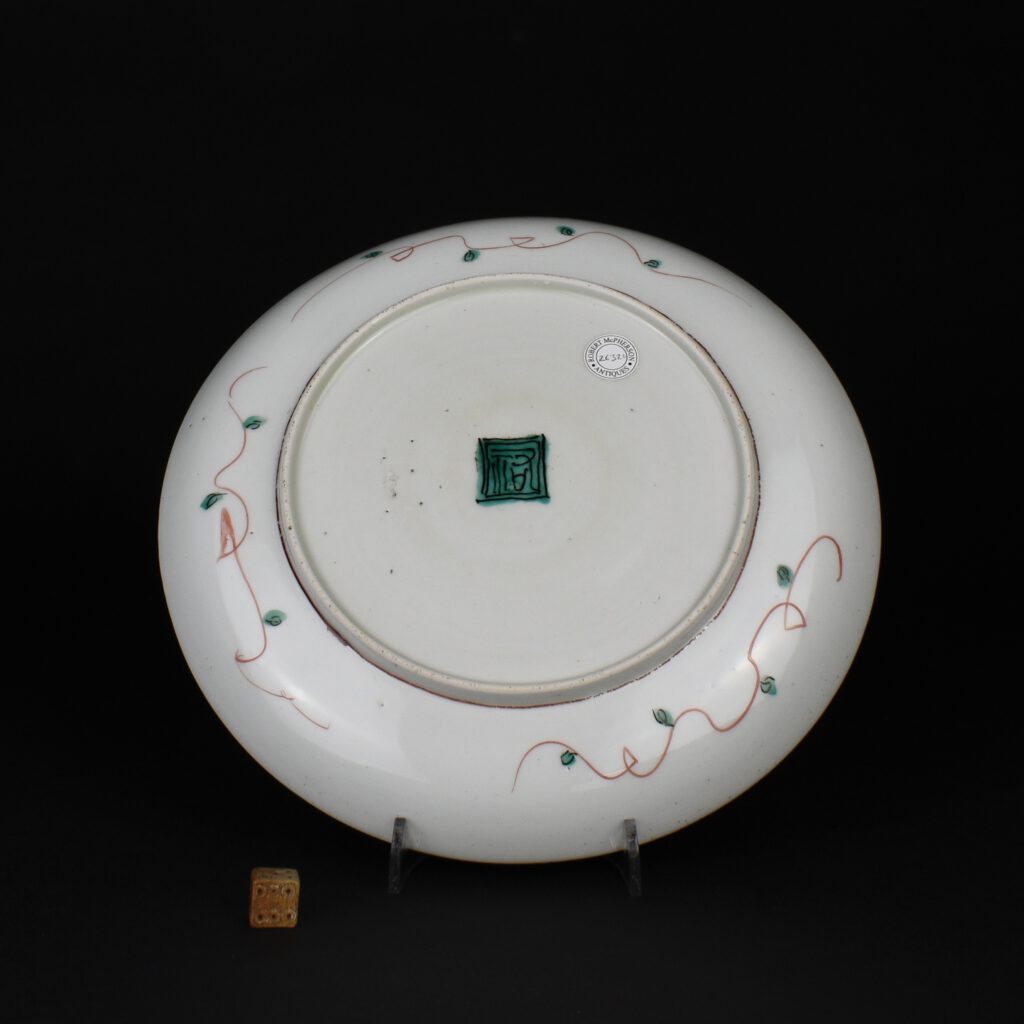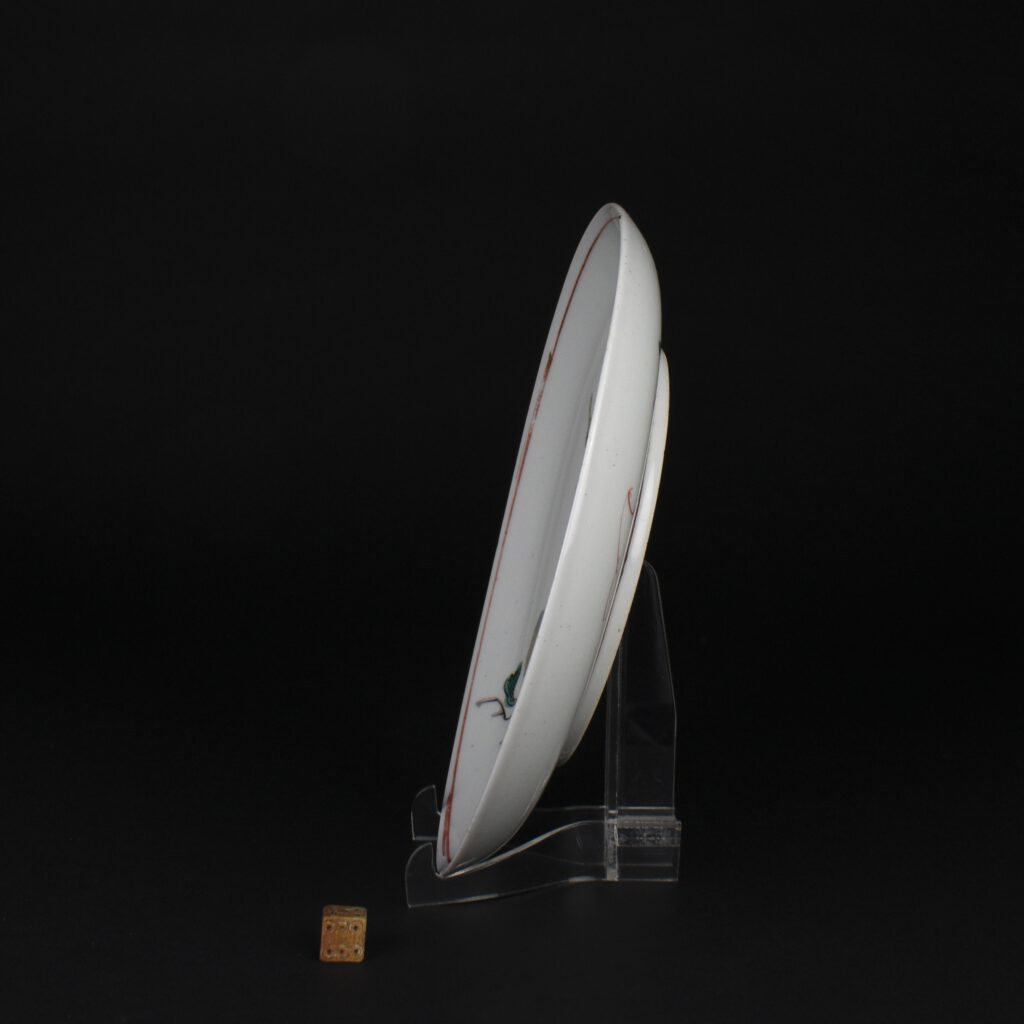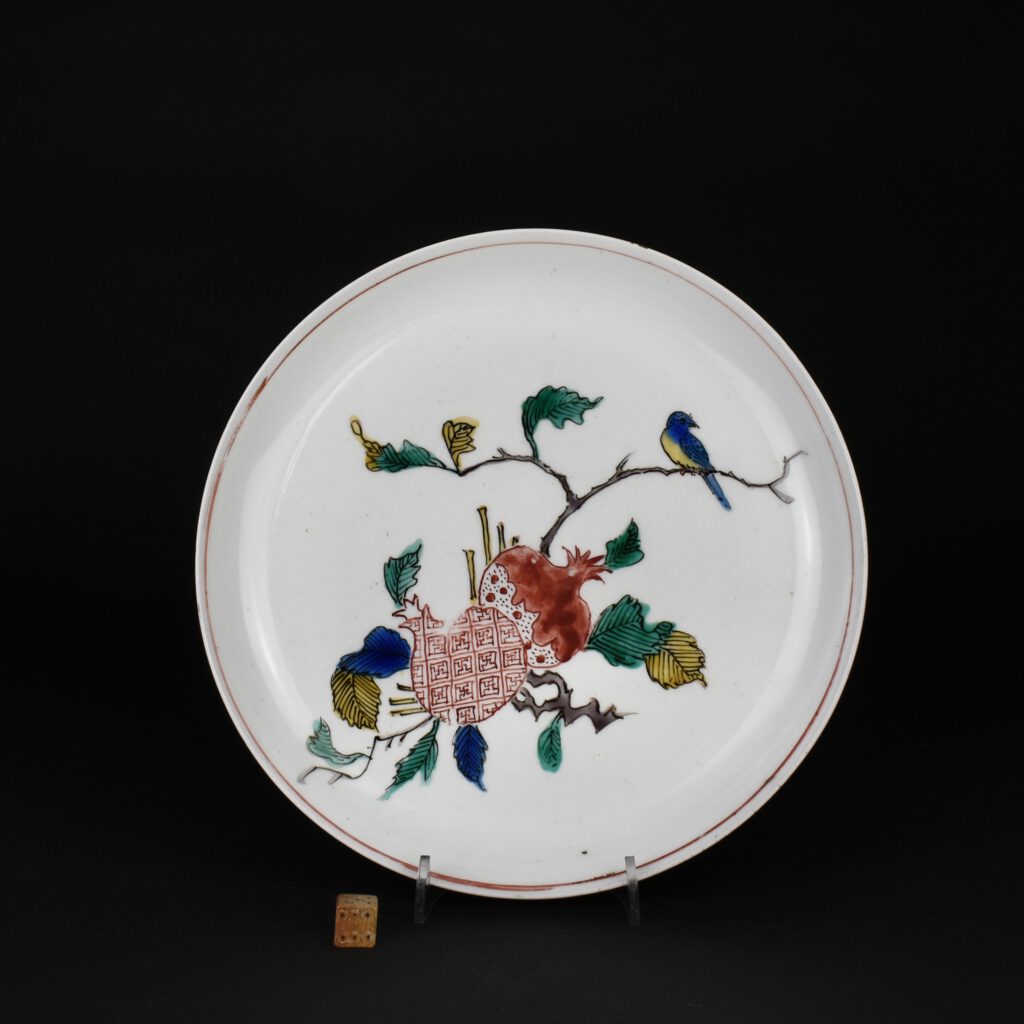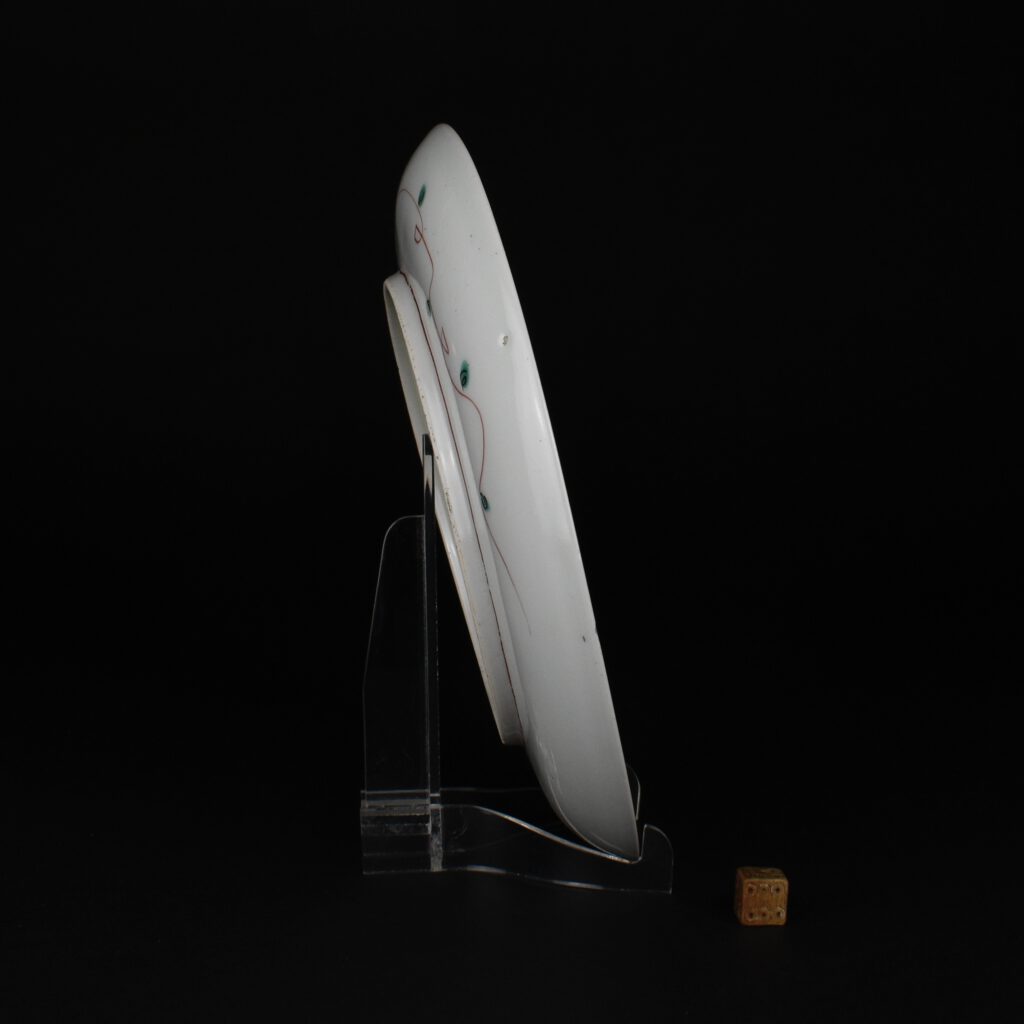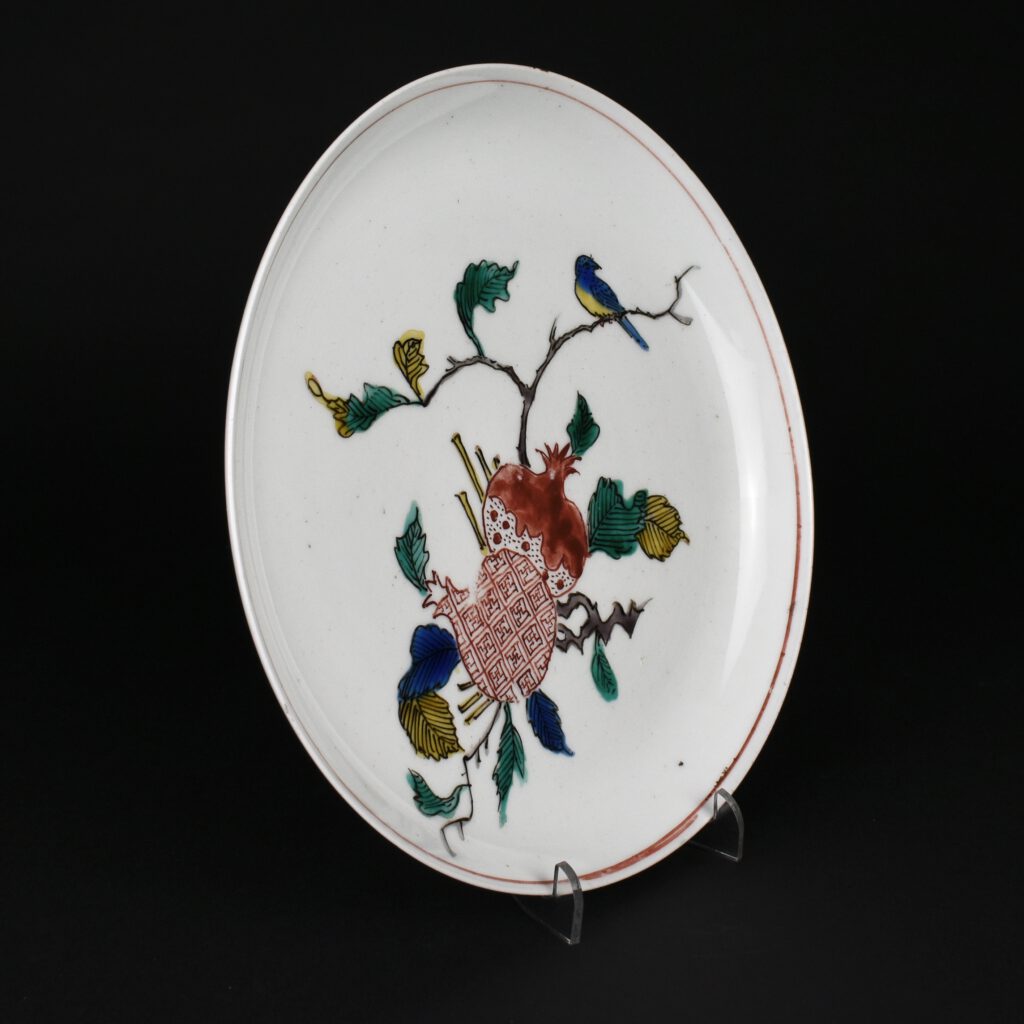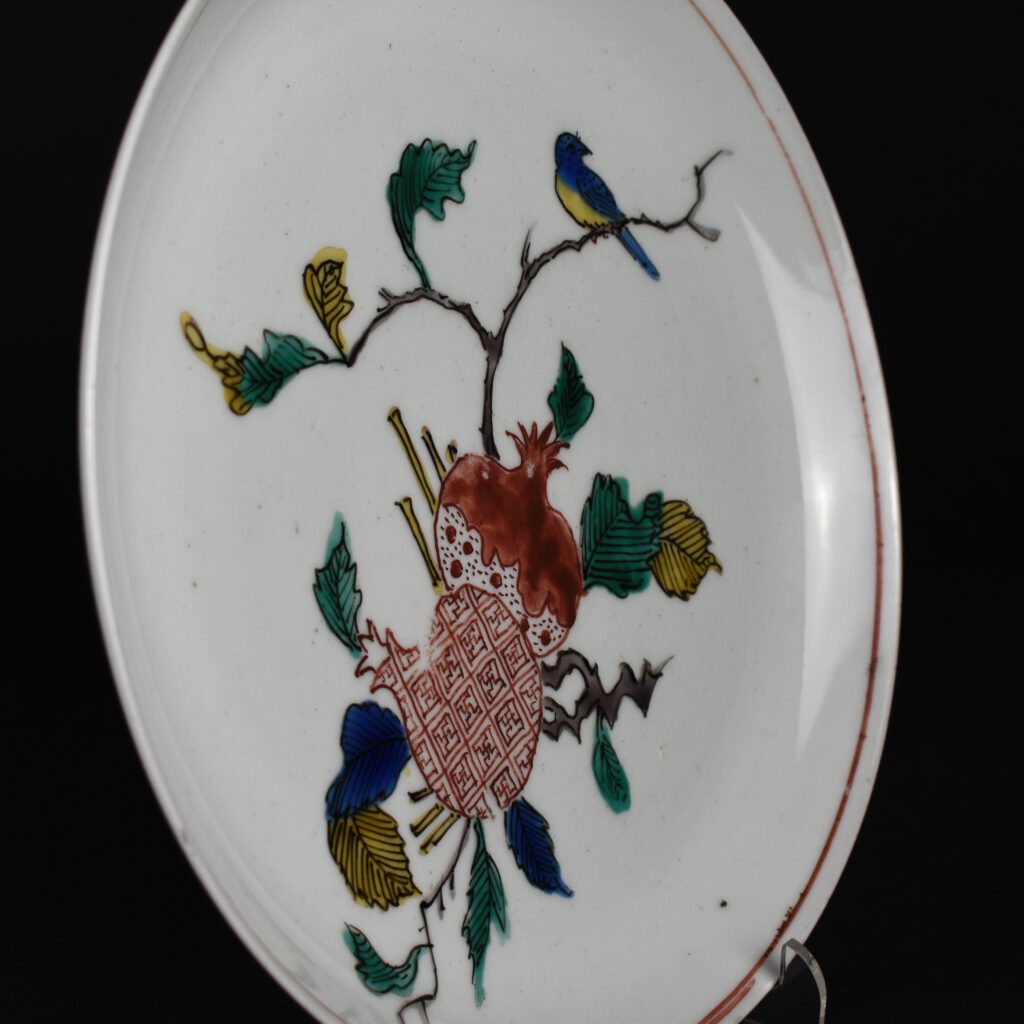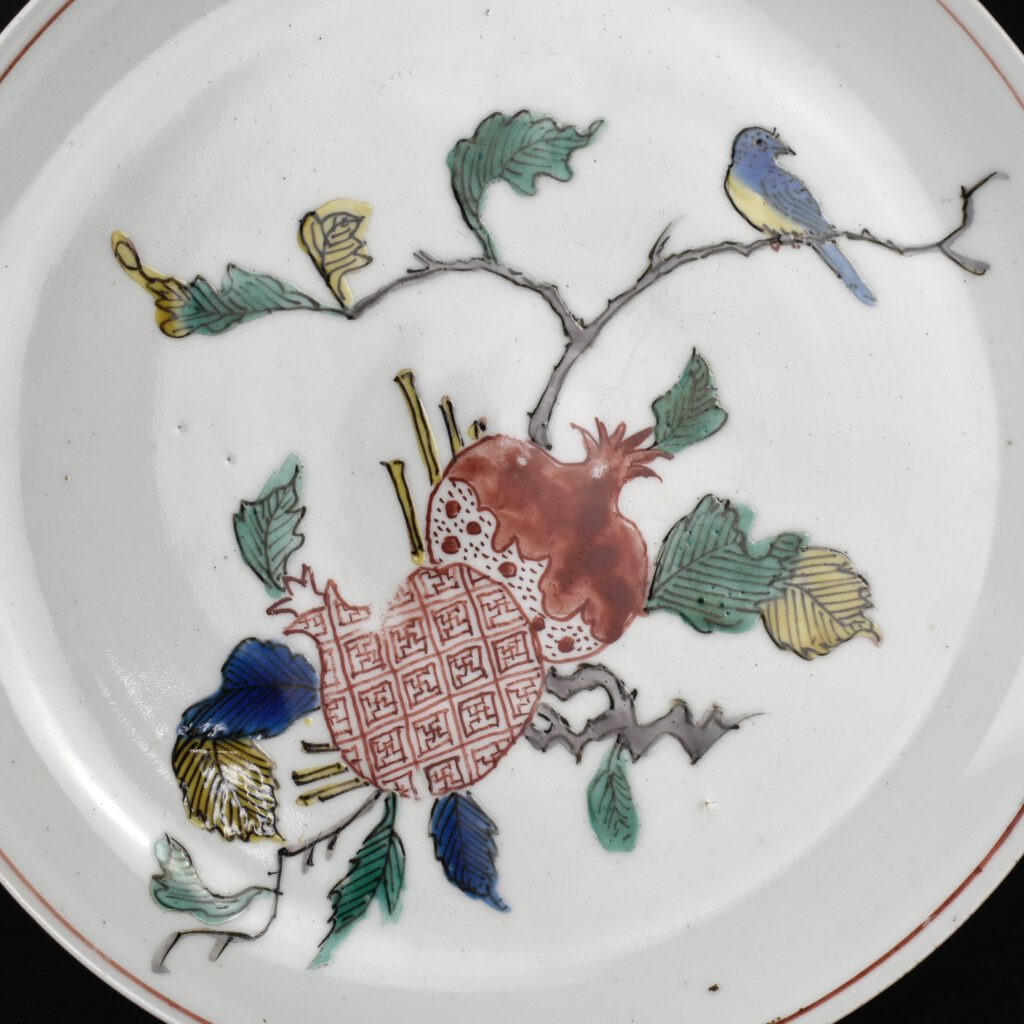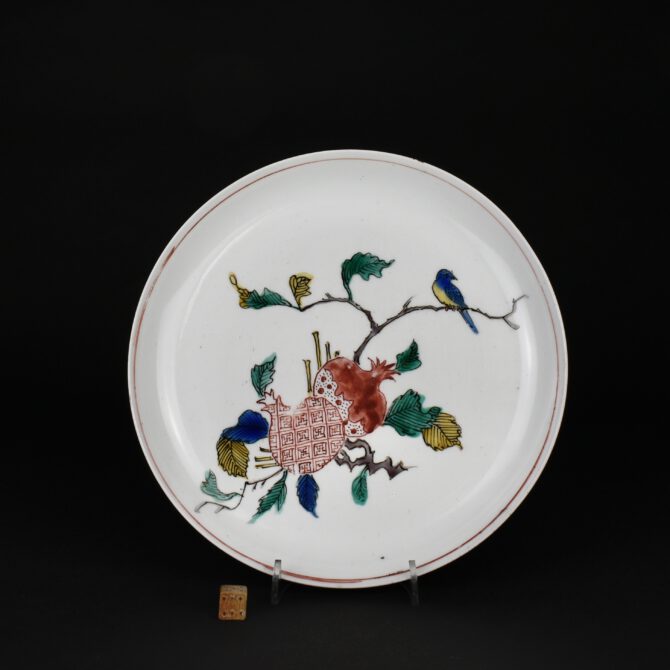
A 17th Century Japanese Dish of Ko-Imari Type
A 17th Century Japanese Dish of Ko-Imari Type c.1660 – 1680. This thinly potted Ko-Kutani Dish was made at the Arita kilns, previously it was thought that this type of Japanese porcelain was made at Kilns in Enuma County, Ishikawa Prefecture, Japan. So, this type could be called Arita porcelain in Ko-Kutani style. The overglaze enamels employed include green, yellow for faded leaves and the bird’s chest, aubergine as well as a dry none-glassy red. Unlike most Chinese enamels the colours are painted over the black outline drawing. This adds intensity to the black which would otherwise be pale and a bit grey, it also means that the fragile thin black is protected by a layer of enamel. The bird is a probably a type of sparrow, it perches on a leafless branch of fruiting pomegranate. As with Indian and Chinese art pomegranate symbolises fertility because of its numerous seeds, it is the symbol of Kishibo-jin in Japan. Kishibo-jin (Hariti in India) was the goddess of children. The base has a seal-mark in black with overglaze green enamel.
SOLD
- Condition
- In excellent condition, a small amount of rubbing to the thin red pigment. A little warped.
- Size
- 21.7 cm (8 1/2 inches)
- Provenance
- N/A
- Stock number
- 26320
